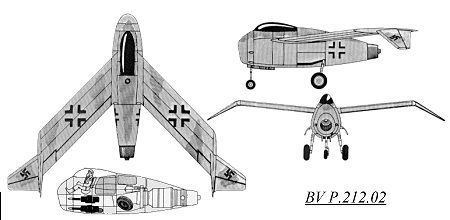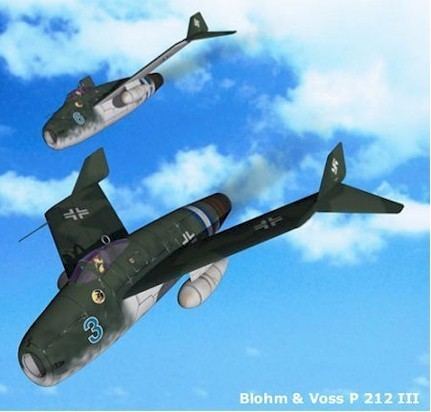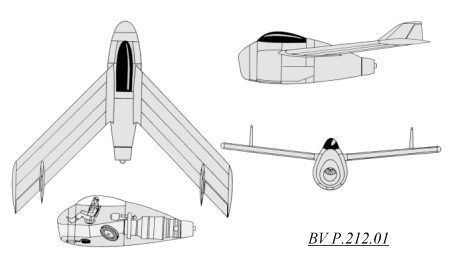Length 7.55 m | Manufacturer Blohm + Voss | |
 | ||
The Blohm & Voss P212 was a prototype jet fighter designed by Blohm & Voss for the Emergency Fighter Program Luftwaffe design competition during the Second World War.
Contents
Whilst the Luftwaffe chose to produce the Focke-Wulf Ta 183 following the competition, construction of three P212 prototypes began in May 1945, following extensive wind tunnel and structural tests. The first aircraft was to make its first flight in August, however construction was abandoned following the end of the war.

History
In the latter part of 1944, the High Command of the Luftwaffe came up with the Emergency Fighter Competition, which challenged engineers to invent a new aircraft. After previous projects, it was decided to take advantage of the Heinkel HeS 011, a new jet engine which was being developed, in order to create a stronger, high-altitude fighter jet. By February 1945, the Luftwaffe had received several proposals. Three proposals had been received from Messerschmitt, two from Focke-Wulf and one each from Heinkel, Junkers and Blohm & Voss respectively.
BV P.212.01

It was the first of the BV P.212 designs. It had a short, squat fuselage and a short air intake for the He S 011 jet engine. It had swept wings at a forty-five degree angle.
BV P.212.02

The second of the BV P.212 designs, it featured a slightly lengthened fuselage and was seen as a refined version of the original.
BV P.212.03
The third version, named BV P212.03, which boasted a further lengthened body and larger internal fuel tanks, was the model presented to the Luftwaffe. Its wings were swept back at forty degrees. Uniquely, the wings were designed to be built out of either wood, steel or aluminium, and the cabin was pressurised for the pilot. With an ideal fuel weight, the aircraft could fly for up to four hours at a time.
